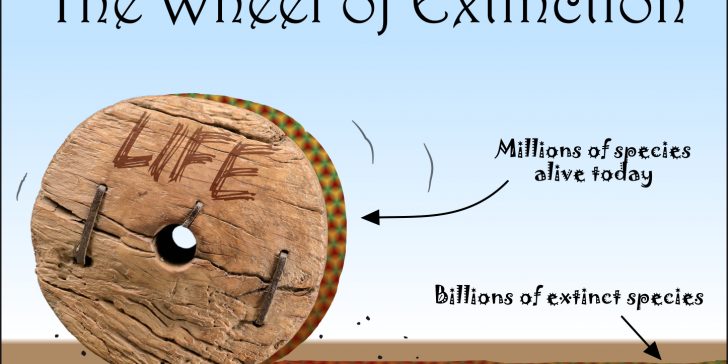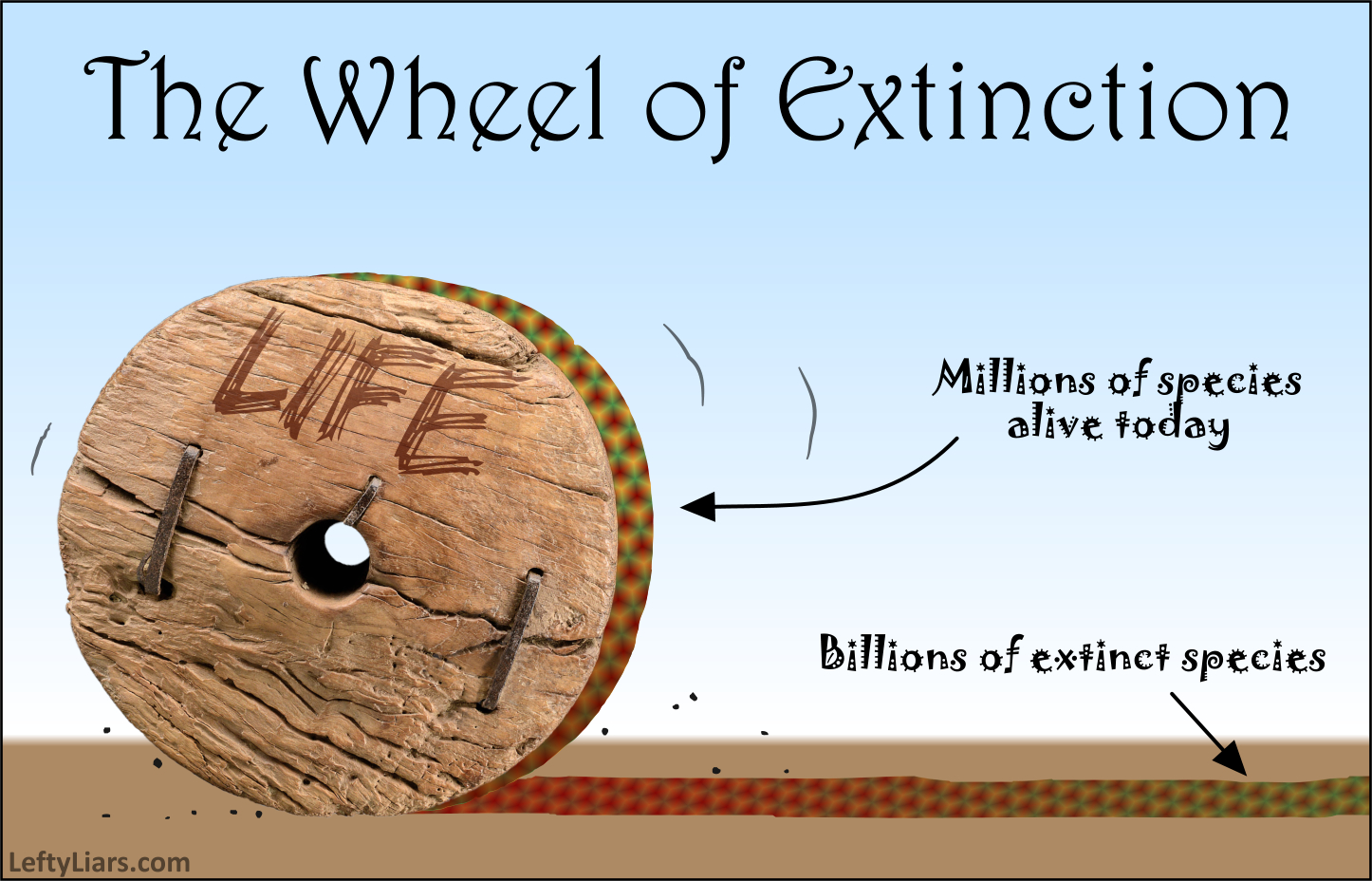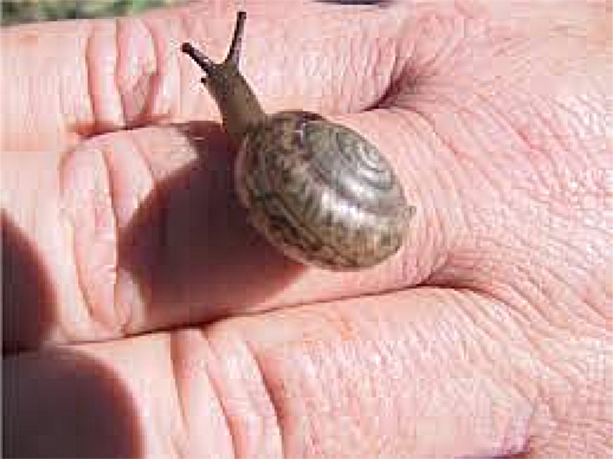
 Just as you cannot roll a heavy wooden wheel across the mud without leaving a track, so life cannot evolve without extinction. It is something even biologists need to learn. When I say learn, they already know enough to work it out but have snubbed the subject like jilted prom queens. Political biologists never discuss the necessity of extinction amid the roar of loudmouthed Marxist Environmentalists, who palm it off as a “terrible disaster” while sabotaging major infrastructural projects. Without extinction, none of us would exist. It is essential to the development and continuation of life.
Just as you cannot roll a heavy wooden wheel across the mud without leaving a track, so life cannot evolve without extinction. It is something even biologists need to learn. When I say learn, they already know enough to work it out but have snubbed the subject like jilted prom queens. Political biologists never discuss the necessity of extinction amid the roar of loudmouthed Marxist Environmentalists, who palm it off as a “terrible disaster” while sabotaging major infrastructural projects. Without extinction, none of us would exist. It is essential to the development and continuation of life.
When one species cannot adapt to a changing environment, another takes its place, and impeding that process would cause evolution to grind to a halt. Without mutation, natural selection, and survival of the fittest, we would have never proceeded further than the first primitive microbes in prehistoric oceans. Look at the numbers:
From Wikipedia:
More than 99 percent of all species, amounting to over five billion species, that ever lived on Earth are estimated to have died out. Estimates on the number of Earth’s current species range from 10 million to 14 million, of which about 1.2 million have been documented and over 86 percent have not yet been described. In 2016, scientists reported that 1 trillion species are estimated to be on Earth currently with only one-thousandth of one percent described. [see link above for citations]
“10 to 14 million current species” is a conservative estimate. Other scientists say the figure is roughly 2 billion, and others still believe Earth is home to 1 trillion species. We would currently have about 12 million animal and plant species on Earth, going with the most conservative estimate. Divide that into the five billion that ever lived, and about 417 sets of 12 million species have gone extinct. A number equal to all our animal and plant species in the world today, wiped out 417 times. If the one trillion figure is accurate, it would mean 417 trillion species went extinct. With that in mind, just how vital is Furbish’s lousewort, and was it ever going to keep going indefinitely?
 From Revolvy:
From Revolvy:
Pedicularis furbishiae (Furbish’s lousewort) is a perennial herb found only on the shores of the upper Saint John River in Maine and New Brunswick. … The Dickey-Lincoln dam, a $227 million hydroelectric project proposed on the upper Saint John River in 1974, was shut down by Congress in 1986 after years of study because the dam would have flooded 88,000 acres of Maine forest and severely reduced the lousewort’s habitat. Some criticized ending the dam project to protect the lousewort. Time magazine called the idea “downright silly” in 1977. While thought extinct at the time the dam was proposed, it was rediscovered in 1976 by C.D. Richards while doing surveys to determine the environmental impact of the dam
Environmentalists have behaved this way since the ’70s, shutting down dams around the world by scrounging up examples of forgettable species on their way to extinction to terminate significant projects vital to farmers, towns, and cities across the land. Why close the Dickey-Lincoln dam for the sake of a crappy plant they already thought was extinct? From the editors of the Spokane Daily Chronicle, April 6, 1977 (see original here):
Carrying Idea Too Far
While the nation suffers through one energy crisis after another, valuable dam projects that could produce power are being rejected because of their possible threat to endangered species of animals, insects, fish and even plant life.
While preserving some of this flora and fauna may be important to maintaining the balance of nature, it would appear that some interest groups are carrying the idea a bit too far. Should the time come when sagebrush is added to the endangered species list, Columbia Basin agriculture will be a dead duck.
It seems far more reasonable to establish some criteria of value in determining what endangered species deserve protection from government. In balancing the needs of humans against such protective measures, the direct contribution of a given species must be weighed against the worth of any project or activity that may constitute a threat to such life.
A recent example of what appears to be overkill of the endangered species law is the proposal to halt a $1.3 billion hydroelectric dam project in Maine because the furbish lousewort… is one of 14 plants listed by the Department of Interior as an endangered and threatened species.
It seems that the [plant], which neither produces food or fiber, was thought to be extinct until about 200 of them were found along the banks of the St. John river and would be inundated if the dam were built. The government has determined the dam will have to be abandoned if the lousewort can’t be encouraged to grow elsewhere. It is assumed that families and businesses who may suffer from future power shortages – can grin and bear it.
From The Washington Post – April 4, 1977:
The Lousewort and the Law
THE FURBISH LOUSEWORT may be a lovely plant, if you like scraggly [weeds]… and the snail darter may be more delightful than the average three-inch fish. But something is awry when a clump of louseworts along the Upper St. John River can louse up planning for the Dickey-Lincoln Dam – or when a federal court, to save the snail darter, stops the nearly complete Tellico Dam down on the Little Tennessee River.
Misty-eyed environmentalists are delighted to see such obscure bits of nature hold sway over huge public works. They are also coming to regard the endangered species act as a weapon of last resort against projects that they oppose on broader grounds. The more pragmatic dam-fighters recognize, however, that many more snail-darter-type showdowns or more lousewort jokes can endanger the law itself. Already some members of Congress are grumbling that when they approved the act, they had in mind good causes such as saving bald eagles and keeping commercial foragers from ripping off great act in the West. They didn’t mean to give automatic priority to a whole assortment of undistinguished flora and fauna with precarious existences and funny names.
Conservationists protect a flea’s backside’s whiskers at any cost to the public – but look at the word ‘conserve’ for a moment. It means (emphasis mine):
Protect (something, especially an environmentally or culturally important place or thing) from harm or destruction.
So once again, how important is the Furbish lousewort?

From Wikipedia:
Tellico Dam is a dam built by the Tennessee Valley Authority (TVA) in Loudon County, Tennessee on the Little Tennessee River just above the main stem of the Tennessee River. It impounds the Tellico Reservoir …. Construction of the dam was delayed when a small endangered fish called the snail darter was discovered on the Little Tennessee River. Dam opponents brought a lawsuit under the Endangered Species Act.
 After a long and expensive fight, Greenies stopped the dam’s construction. After another lengthy, costly battle, Congress finally exempted the Tellico Dam from the Endangered Species Act as an amendment in an unrelated bill. Here’s the kicker: people later found remnant populations of the snail darter in other streams. It is another example of mischievous Green Marxists at work, lying and exaggerating.
After a long and expensive fight, Greenies stopped the dam’s construction. After another lengthy, costly battle, Congress finally exempted the Tellico Dam from the Endangered Species Act as an amendment in an unrelated bill. Here’s the kicker: people later found remnant populations of the snail darter in other streams. It is another example of mischievous Green Marxists at work, lying and exaggerating.
 Say hello to the boggomoss snail in Queensland, Australia. From The Queensland Times:
Say hello to the boggomoss snail in Queensland, Australia. From The Queensland Times:
$1.2b dam granted federal approval after nine years
A $1.2 billion dam is back from the dead after a population of endangered snails caused the vital Queensland project to be shelved nine years ago.
More than 500 construction jobs were lost in 2008 when the boggomoss snail – listed as critically endangered – was discovered at the Nathan Dam project site along the Dawson River, west of Gladstone.
Independent experts have since found the population of the snail to be “significantly higher than originally suggested” and the project is officially back on the table.
But the struggle at a snail’s pace to get the project off the ground has drawn criticism as the boggomoss snail joins the yakka skink, the ornamental snake, the Wallum tree frog and the black-throated finch as endangered species that have caused significant delays to big projects.
Queensland Resources Council chief executive Ian Macfarlane welcomed the approval of the project, but questioned why the process took so long.
Sickening, isn’t it? Environmentalists hurt fellow humans by halting the development of essential facilities like dams to protect forgettable minor species, most of which are on their way through the very crowded extinction terminal of Evolution Airport. It is easy to take such species and relocate them, but greenies were never interested in the snail. They wanted to halt the construction of dams to destroy capitalist nations. To wit:

By David Reyes, Los Angeles Times, Sept. 22, 1999:
Hole in the Dam: If Not for 3 Endangered Species, Seven Oaks Would Be Set to Operate
After spending $250 million on designing, planning and building the Seven Oaks Dam, engineers are ready to close the gates and start operations at the massive structure. But a few small things are in the way: rats and wild plants.
The 550-foot-high dam near Redlands was built by the U.S. Army Corps of Engineers as the crown jewel in the Santa Ana River flood-control project. It was designed to protect downriver residents against the 100-year flood and was supposed to be operating by now.
But last March, as the dam neared completion, the corps was slapped with a lawsuit filed by environmental groups seeking to protect the endangered San Bernardino kangaroo rat, whose habitat lies directly in front of the dam. The suit also seeks to protect two endangered plants, the Santa Ana River woolly star and the slender-horned spineflower.
The dam is expected to reduce, or eliminate the need for, flood insurance for tens of thousands of homeowners in Orange, San Bernardino and Riverside counties. But now it looks as if homeowners will have to pay insurers $200 to $800 a year each for a while longer.

Here’s another ridiculous Government/Green theft of land over a non-existent “Dusky Gopher Frog.” Louisiana landowner, Edward Poitevent, lost millions of dollars to defend himself against useless green bureaucrats trying to “defend” an imaginary frog. On November 13, 2017, Tucker Carlson interviewed Poitevent [at 35:30], who explained no Dusky Gopher Frogs were on his property or in his State. Yet, civil servants wanted him to give his land over to the invisible amphibians. Regardless, he had to fight paper pushers and Greens for eight years to get them off his back. From PERC (the Property and Environment Research Center):
In 2011, the U.S. Fish and Wildlife Service designated 1,500 acres of Poitevent’s family property in St. Tammany Parish, Louisiana, as critical habitat for the dusky gopher frog, an endangered species that has not been documented in the state for half a century. The agency designated the area despite the fact that significant changes would be required for the land to be able to support the frog. By the federal government’s own estimate, the designation could have cost Poitevent and his family up to $34 million in lost development value.
The dispute over the designation went all the way to the Supreme Court, where PLF [Pacific Legal Foundation] represented Poitevent last October. In November, the Supreme Court issued a narrow but unanimous decision that sent the case back to a lower court, ordering it to wrestle with the question of what qualified as “habitat,” a ruling effectively in favor of the property owners. “The justices all agreed,” PLF said of the decision at the time, “that federal regulators overstepped their authority when they declared 1,500 acres of private land in Louisiana as a critical habitat for a frog that can’t survive there.” The consent decree issued last week represents the “final victory for Edward Poitevent and property rights,” as PLF put it.
 Nowadays, environmentalists often use ‘Man-made Global Warming’ as their excuse to close down mines, dams, or any other major infrastructure. However, mankind has nothing to do with a changing climate. While ‘global warming’ may be the new excuse on the block, Greens continue using almost-extinct minor species as an excuse to stop dams. With Shasta Dam, Northern California, they are using the Shasta salamander and “sacred tribal sites” as their excuse to prevent people from raising the dam. The federal government wants to raise Shasta to provide more water to Central Valley farmers. Donald Trump is behind the project, which is being opposed and held up by a host of environmentalists and California Attorney General Xavier Becerra. Such examples are the dirty tricks used by Lefties to stop society from building dams, expressways, buildings, and bridges, thus handicapping the entire nation. They have no concern for almost extinct species of forgettable weeds, frogs, or salamanders. They are perfectly aware that every day many species go extinct, and plenty of others start life on the treadmill.
Nowadays, environmentalists often use ‘Man-made Global Warming’ as their excuse to close down mines, dams, or any other major infrastructure. However, mankind has nothing to do with a changing climate. While ‘global warming’ may be the new excuse on the block, Greens continue using almost-extinct minor species as an excuse to stop dams. With Shasta Dam, Northern California, they are using the Shasta salamander and “sacred tribal sites” as their excuse to prevent people from raising the dam. The federal government wants to raise Shasta to provide more water to Central Valley farmers. Donald Trump is behind the project, which is being opposed and held up by a host of environmentalists and California Attorney General Xavier Becerra. Such examples are the dirty tricks used by Lefties to stop society from building dams, expressways, buildings, and bridges, thus handicapping the entire nation. They have no concern for almost extinct species of forgettable weeds, frogs, or salamanders. They are perfectly aware that every day many species go extinct, and plenty of others start life on the treadmill.
 They know that evolution is a continually rolling wheel, with extinction as its engine, working to provide a continuously improved product. Species optimize through mutation and genetic takeovers, with all life benefiting. Every day hundreds of thousands, if not millions, of species go extinct, while just as many begin life as new species. Scientists have not documented or described most of them and will not notice missing ones for years or decades. The Gray Striped Mosquito will replace the White Striped Mosquito tomorrow, and naturalists will not know this because neither insect has been noticed, let alone classified. When Greens whine about organisms leaving Extinction Airport, they never tell you about the life forms arriving to replace them. They never discuss the necessity nor the extent of extinction because they are liars and myth-makers, only concerned with destroying capitalism.
They know that evolution is a continually rolling wheel, with extinction as its engine, working to provide a continuously improved product. Species optimize through mutation and genetic takeovers, with all life benefiting. Every day hundreds of thousands, if not millions, of species go extinct, while just as many begin life as new species. Scientists have not documented or described most of them and will not notice missing ones for years or decades. The Gray Striped Mosquito will replace the White Striped Mosquito tomorrow, and naturalists will not know this because neither insect has been noticed, let alone classified. When Greens whine about organisms leaving Extinction Airport, they never tell you about the life forms arriving to replace them. They never discuss the necessity nor the extent of extinction because they are liars and myth-makers, only concerned with destroying capitalism.
They grumble, moan, and chatter incessantly about extinction like tramps hustling you in the street for a dollar while picking the billfold out of your back pocket. They are con artists, saboteurs, and charlatans who do not give a damn about weeds, frogs, salamanders, or a changing climate.





